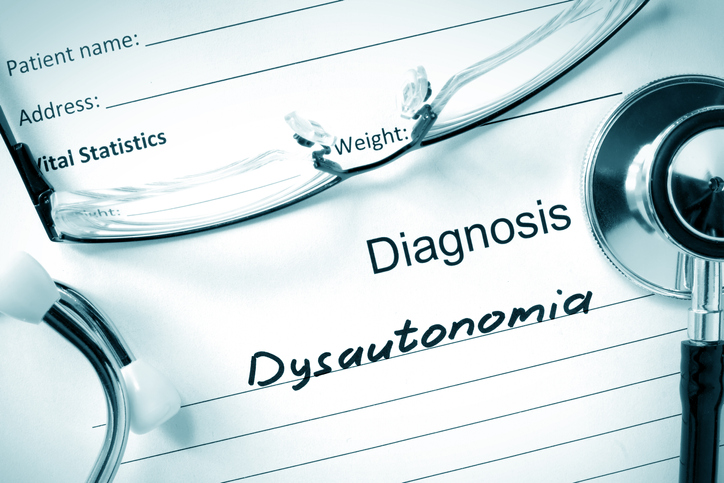Pain
What Is Dysautonomia?

Dysautonomia — also known as autonomic dysfunction or autonomic neuropathy — refers to a group of conditions that involve dysfunction of the autonomic nervous system (ANS). It occurs when communication with the nerves in the autonomic nervous system is disrupted or impaired. When the ANS doesn’t operate properly, a host of symptoms can occur, including issues with blood pressure, heart rate, digestion, sweating, breathing, and bladder control.
What is the autonomic nervous system?
The autonomic nervous system is part of the body’s nervous system. It controls involuntary bodily functions such as heart rate, narrowing and widening of blood vessels, body temperature, digestion, sexual arousal, blood pressure, pupil dilation, and breathing.
The autonomic nervous system has two components: the sympathetic nervous system and the parasympathetic nervous system. The sympathetic nervous system stimulates the function of organs. and the parasympathetic nervous system slows down bodily processes. Dysautonomia involves a malfunction of either the sympathetic autonomic nervous system (SANS) or the parasympathetic autonomic nervous system (PANS).
What are the characteristics of dysautonomia?
Dysautonomia can be localized (e.g., complex regional pain syndrome) or generalized (e.g., widespread involvement of the autonomic nervous system). It can be acute and reversible (e.g., Guillain-Barre syndrome), or it can be chronic and progressive.
What are the symptoms of dysautonomia?
Dysautonomia is unpredictable and highly individualized: symptoms vary in type, severity and duration. They include, but are not limited to, the following:
- Orthostatic hypotension (dizziness or fainting upon standing)
- Rapid or slow pulse
- Hypertension
- Shortness of breath
- Exercise intolerance
- Difficulty controlling body temperature
- Gastrointestinal issues
- Urinary problems
- Erectile dysfunction or vaginal dryness
- Difficulty swallowing
- Brain fog or mood swings
- Visual disturbances, including blurred vision and sluggish pupil reaction
- Muscle weakness and balance issues
- Sleep issues and fatigue
What are the types of dysautonomia?
Dysautonomia is categorized according to the origin of the condition. There are two main categories: primary dysautonomia and secondary dysautonomia. Primary dysautonomia occurs independently of another illness. Secondary dysautonomia develops as a result of another health condition or injury. Specific types of dysautonomia include, but are not limited to, the following:
- Postural orthostatic tachycardia syndrome (POTS)
- Neurocardiogenic syncope (NCS)
- Multiple system atrophy (MSA)
- Familial dysautonomia (FD)
- Pure autonomic failure
- Other (originating from another disease or damage to the body)
What are the risk factors for developing dysautonomia?
Factors that increase the risk of developing dysautonomia include being of Jewish or Eastern European descent or having a family member with the disorder.
Health conditions that are associated with secondary dysautonomia —and therefore increase the risk of the condition — include, but are not limited to, the following:
- Diabetes
- Amyloidosis
- Certain autoimmune diseases, such as Sjögren's syndrome, lupus, rheumatoid arthritis, celiac disease, and Guillain-Barre syndrome
- Sarcoidosis
- Certain viruses or bacterial infections, such as Lyme disease and human immunodeficiency virus (HIV)
- Paraneoplastic syndrome
- Chiari malformation
- Parkinson’s disease
- Multiple sclerosis
- Inflammatory bowel diseases, such as Crohn’s disease or ulcerative colitis
- Charcot-Marie-Tooth disease
- Ehlers-Danlos syndrome
- Lambert-Eaton myasthenic syndrome (LEMS)















